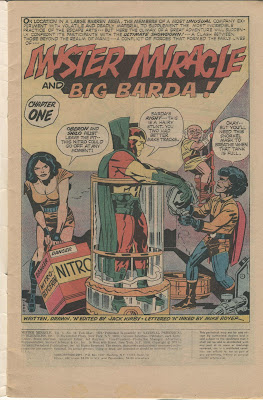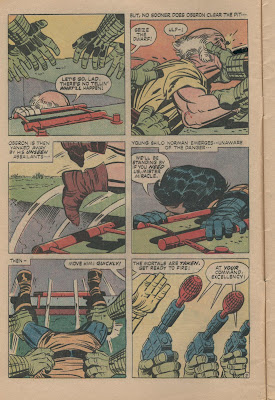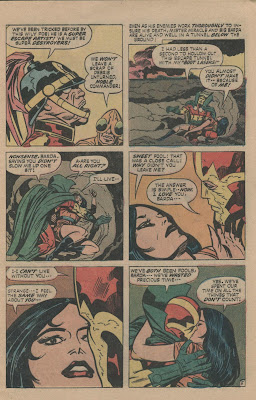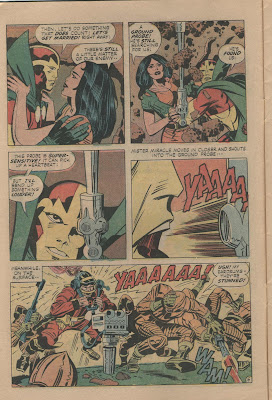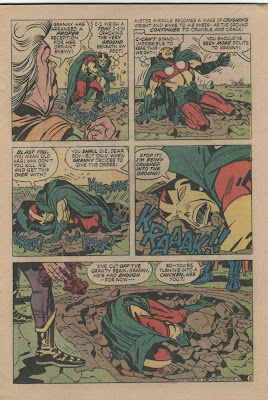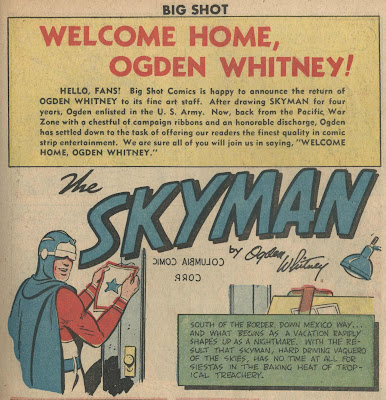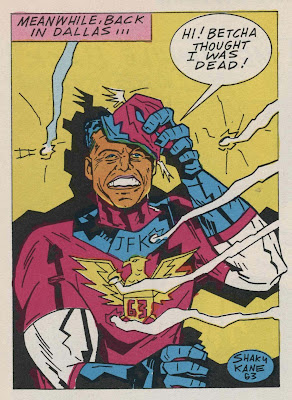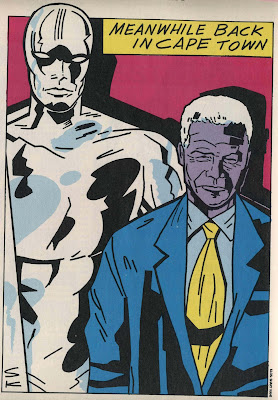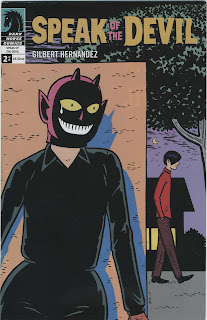Hal Foster, Cartoonist
by Dan Nadel
Sunday, September 6, 2009
Read Comments (10)

At 29, Hal Foster bicycled from Winnipeg to Chicago. He was in search of a new market, having already achieved the dubious title of most popular illustrator in Winnipeg. Seems like the stuff of a Guy Maddin film, but, nope, it was just Foster, one of our sportier cartoonists (there are apocryphal stories of the artist shooting wildlife out his studio window.) That was in 1921. Ten years later he became the regular artist on the Tarzan comic strip, and six years after that began publishing his masterpiece, Prince Valiant.
I came to Foster and Prince Valiant just recently via Wally Wood. Wood’s trees, the artist long maintained, were Foster’s trees, and Wood’s sense of composition and figures in motion was heavily influenced by Foster’s balanced and graceful panels. Sure I’d read Foster before, but I’d never found a way in. Fortunately, Fantagraphics recently released Prince Valiant Vol. 1: 1937-38, and I was able to absorb the material in a wholly new way. After doing some reading I dug up a copy of The Comics Journal 102 (1985), which features a fascinating interview by Arn Saba (also look for her Caniff and Gottfredson interviews in other issues) with a then-retired Foster. He comes across as a melancholy man but confident man, as humble about his work as he was sure of his abilities. Asked about his inspirations, Foster replies, “I would say inspired by the beauty of my own work, and the loveliness of the stories that I stole from better authors. I always worked alone.” On more cartoony strips: “I don’t know why it is that some fellows can draw a little kid like, what’s his name, Charlie Brown, with just a round head, a round nose, and no particular body, and yet give the thing a personality. I still can’t understand that, and where the little things he says, and the funny little illustrations, are more real than some of the best drawn strips, the adventure strips.” Yes, that’s the master of comic strip realism talking about the virtues of a simpler approach. Or at least the virtues of Schulz. Intangible authenticity and emotional “reality” are not the first things one thinks of when approaching Foster, but as Saba so eloquently explains in her long introduction to the interview, in many ways they are the crux of what his work. In Prince Valiant, “Foster created the quintessentially American interpretations of the King Arthur legends, complete with a nuclear family, the democratic ideal, and the man-child hero whose boyish hi-jinks often lead to high adventure.” Saba tightly defines Americana here, and to that list I might add “idealism tinged with tragedy”, as the strip begins with the boy Prince losing his mother and embarking on a solo quest to find himself. Foster imbues this and all of the other strips I’ve read with a modest humanity. Where Foster’s illustration heroes N.C. Wyeth and J.C. Leyendecker tended towards grandiosity and dynamism Foster emphasizes the human scale of these adventures and keeps things relatively quiet.
 I can see where readers might cringe at Foster’s idealism and, well, cleanliness. There is nary a hair out of place, no nod to the dirt, grime, and grotesqueries of the time. Even when Val skins a goose and wears its skin as a mask — a mask later swiped by Jack Kirby for his character The Demon — it’s bloodless. But Foster’s sensibility is so wonderfully innocent and immersed in depicting virtue and honor that to let anything else in would have polluted a clear, defined well of ideas. Prince Valiant is a perfect pre-angst fantasy in which rational justice wins out.
I can see where readers might cringe at Foster’s idealism and, well, cleanliness. There is nary a hair out of place, no nod to the dirt, grime, and grotesqueries of the time. Even when Val skins a goose and wears its skin as a mask — a mask later swiped by Jack Kirby for his character The Demon — it’s bloodless. But Foster’s sensibility is so wonderfully innocent and immersed in depicting virtue and honor that to let anything else in would have polluted a clear, defined well of ideas. Prince Valiant is a perfect pre-angst fantasy in which rational justice wins out.
Foster’s artwork completely reinforces the ideal order. The page above is arranged with larger set-up and concluding panels sandwiching a middle section of rapid action, expertly choreographed so that readers can follow Val in and out of a room, and then savor the ultimate conclusion in the last couple panels. A demonic but playful Val, a terrified Ogre, and finally a clearly victorious hero. The figures, while well posed, are never stiff — they have an inner life and animation. Also, Foster, while a stickler for detail, knew when to leave it out: Most of the action plays out against solid colors — yellows and blues expertly rhyming with one another to create a unified page.
 This page is remarkable for its wide range of approaches, settings and emotions. In the beginning Val make an emotional proclamation (swiped from a film still, perhaps?) and then Foster races him off to the forest. Look at that bottom left panel. After a couple panels of plain backgrounds, Foster immerses us in the forest (A damn straight Wally Wood forest) with great detail and then, with some flourish, exists Val onto a plateau above the “sinister castle” a skull perched just behind him. Val is on the cusp, and the weight of his adventure is made evident by the panel size and velocity of the action. Meanwhile, the yellow of Val’s shirt picks up his cloak, while the various browns of the woods and cloth are all delicately arranged for maximum readability.
This page is remarkable for its wide range of approaches, settings and emotions. In the beginning Val make an emotional proclamation (swiped from a film still, perhaps?) and then Foster races him off to the forest. Look at that bottom left panel. After a couple panels of plain backgrounds, Foster immerses us in the forest (A damn straight Wally Wood forest) with great detail and then, with some flourish, exists Val onto a plateau above the “sinister castle” a skull perched just behind him. Val is on the cusp, and the weight of his adventure is made evident by the panel size and velocity of the action. Meanwhile, the yellow of Val’s shirt picks up his cloak, while the various browns of the woods and cloth are all delicately arranged for maximum readability.
Both of these pages also reveal a key part of Foster’s appeal: He shied away from the chiaroscuro and noir angularity of the Caniff-ian school of adventure comics and instead kept his spaces fairly level, colorful and enticing. These are comics that look accessible but contain a tremendous amount of quiet sophistication. Foster’s sense of place, color, and body language is just stunning. But again, he was never showy. It’s a realism that never calls itself “realistic”.
And the story itself? I thoroughly enjoyed it. Foster himself seemingly didn’t have great ambitions besides to write something that satisfied him and entertained his readers. I found this first book completely engrossing. Prince Valiant opens up a world that I wanted to stay in — a wide-eyed early 20th century approach to fantasy with a now-vanished sincerity and wholesomeness. It’s an all too rare pleasure in comics. I now understand why so many cartoonists after him sought to regain that Foster magic, despite the futility of such an anachronistic exercise: It’s a near-perfect distillation of purity (the high moral pulp sought by mid-century guys like Gil Kane and Alex Toth), skill (inarguable drawing ability), and success. Wally Wood chased it his entire career, and was asked to try out to be Foster’s replacement on the strip, but was not given the gig. But everyone from Russ Manning (who was an heir to Foster on Tarzan) to Charles Vess to Ryan Sook (his Wednesday Comics Kamandi) have tried to claim a little bit of Foster’s legacy. And of course the comic strip itself continues under different hands. But it is not so much the characters I’m attached to, but rather Foster’s masterful spell.
I confess to not having anything terribly profound to say about Foster. I suppose I’ve been surprised by and taken with the sensitivity, grace, and fluidity of his work, as well as what a fine comic strip Valiant really was. Foster understood page design and the interplay of color and form about as well as anyone I can think of in the 1930s, but recently he tends to be relegated to illustration rather than comics history. Certainly I’ve made that mistake. The recent reprint publishing activity has had all sorts of interesting effects, particularly in the way certain artists are re-contextualized. The revival and re-packaging of Valiant is particularly significant, as it no longer seems like an oddball project in the Fantagraphics catalog, but rather a prestige item that takes it place alongside other relevant books like Love and Rockets and, dare I say, Prison Pit (in terms of cartoon clarity and craft, the two have something in common. I also loved Prison Pit). This new project gives Valiant something it was long missing: currency. And I’m looking forward to exploring more of it in the years to come.











